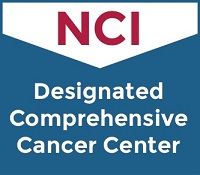Leukemia
At the University of Maryland Marlene and Stewart Greenebaum Comprehensive Cancer Center, most forms of leukemia are treated through its Hematologic Malignancies service. This area is staffed by a multidisciplinary team of physicians and researchers who specialize in the diagnosis and treatment of cancers of the blood.
Children with leukemia are treated in the Center's Pediatric Oncology Program. UMGCCC also has a Blood and Marrow Transplant Program, which specializes in transplants for patients with leukemia and other cancers.
What is leukemia?
Leukemia is cancer of the blood cells, usually the white blood cells. Leukemia cells look different than normal cells and do not function properly. The American Cancer Society estimates that 44,790 new cases of leukemia were diagnosed in the United States in 2009.
What are the types of leukemia?
There are four main types of leukemia, which can be further divided into subtypes. When classifying the type of leukemia, the first steps are to determine if the cancer is:
- Lymphocytic or myelogenous leukemia: Cancer can occur in either the lymphoid or myeloid white blood cells.
- When the cancer develops in the lymphocytes (lymphoid cells), it is called lymphocytic leukemia.
- When the cancer develops in the granulocytes or monocytes (myeloid cells), it is called myelogenous leukemia.
- Acute or chronic leukemia: Leukemia is either acute or chronic.
- Acute leukemia - The new or immature cells, called blasts, remain very immature and cannot perform their functions. The blasts increase in number rapidly, and the disease progresses quickly.
- Chronic leukemia - There are some blast cells present, but they are more mature and are able to perform some of their functions. The cells grow more slowly, and the number increases less quickly, so the disease progresses gradually.
Based on these findings, the leukemia is then classified into one of the four main types of leukemia:
- Acute myelogenous leukemia (AML)
- Chronic myelogenous leukemia (CML)
-
Acute lymphocytic leukemia (ALL)
- UMGCCC offers FDA-approved Kymriah (CAR T Cell Therapy) to treat B-cell ALL in the adolescent and young adult age group of 18-25.
- Chronic lymphocytic leukemia (CLL)
What are the symptoms of leukemia?
Although each individual experiences symptoms differently, the following are the most common symptoms for leukemia:
- More frequent infections and fevers
- Anemia and its symptoms: pale skin, fatigue, weakness
- Bleeding
- Bruising
- Fever, chills
- Loss of appetite
- Loss of weight
- Swollen or tender lymph nodes, liver or spleen
- Petechiae (tiny red spots under the skin)
- Swollen or bleeding gums
- Sweating
- Bone or joint pain
In addition, acute leukemia may cause the following symptoms:
- Headaches
- Vomiting
- Confusion
- Loss of muscle control
- Seizures
- Swollen testicles
- Sores in the eyes or on the skin
Chronic leukemia may affect the skin, central nervous system, digestive tract, kidneys, and testicles. The symptoms of acute and chronic leukemia may resemble other blood disorders or medical problems, so it is important to see a doctor about any of these symptoms.




